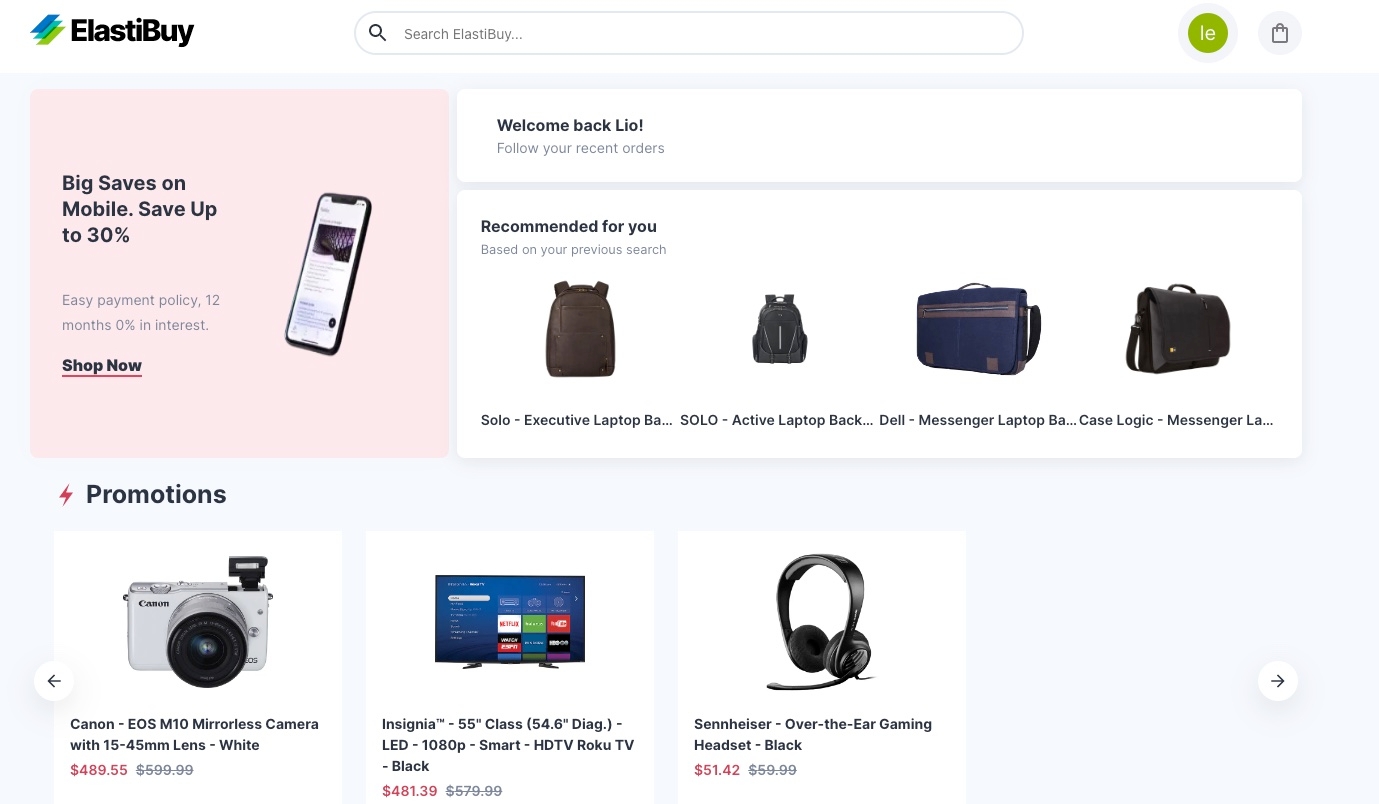How to personalize search experiences using Elastic

Creating personalized ecommerce search platform experiences can be challenging. In this post, we’ll demystify the steps to get started, so you can prioritize search results according to user profiles, offer relevant recommendations, and accelerate workflows. But before we get to that, let’s address why personalized search matters.
[Download the whitepaper: Ecommerce search personalization on Elastic]
The influence of personalized search
Whether you’re aware of it or not, search powers the personalized digital experiences you encounter everyday. Here are just a few examples:
- Search-as-you-type uses your search history to suggest queries.
- Knowledge base articles get served up according to your subscription preferences.
- Healthcare providers are suggested depending on your medical history and location.
- Online shopping recommendations are tailored to you with similar users’ favorite products and previous purchases.

How did personalization become so ubiquitous? Because personalization drives significant business outcomes. According to recent consumer research conducted by Wakefield:
- 88% of online shoppers are more likely to continue to shop on websites that offer a personalized experience.
- 84% report that personalization influences their shopping decisions.
- 68% have purchased items they didn’t intend to based on personalized recommendations.
In a nutshell, personalization builds loyalty, influences decisions, and increases spend. Thus, organizations and the developers who build search experiences are paying attention.
[Related article: How personalization pays off for online retailers]
At its core, personalization is a data problem
All personalization architectures follow the same steps: data ingestion, data analysis, and tailoring experience to end-users. Every step is centered around data — from collecting it to analyzing it, and putting it to use to inform a personalized experience.

The first step is bringing together the customer data that will inform your personalization strategy. Often this also means integrating customer data with additional datasets like queries, clicks, and historical purchases.
Next, you analyze the data in aggregate to determine end-user preferences and distill trends. You can do this manually or with the automated assistance of machine learning. The insights you glean from this analysis inform your personalized search model.
Finally, you apply the results of your data analysis to design a personalized search experience.
Sounds simple, right? At Elastic, we like to say, “It, depends…”
Using Elastic to make short work of personalized search
Luckily, Elastic is a data analytics company built on the power of search. So we offer practitioners a wide variety of developer tools from low-code out-of-the-box options to APIs that give you full control over the experience. Flexibility is a key principle that applies to every step in the process, because every personalization use case is different and by its very definition, must be customized accordingly.
From a data ingestion perspective, you can access prebuilt connectors, frameworks for building connectors for custom sources, and third-party integrations to bring and store relevant data into Elastic.
For data analysis, you can index your data in Elastic and analyze it using Kibana, Elastic’s data visualization and dashboarding tool. You can also automate aggregations with Elasticsearch's APIs. You can even analyze data across clusters to meet data privacy or data residency requirements. You can bring proprietary machine learning models or import them directly from Hugging Face to automate analysis. You can also use Elastic’s native vector search to build and deliver your own personalized recommendation engines.
Once you are ready to apply your personalized insights to search, you can use Elastic’s Enterprise Search APIs that allow for relevancy model tuning on the fly with boosts or with field weights. To get even more control over result ranking, you can use Elasticsearch’s APIs. You can also use Elastic’s Search UI to build a search experience fast, using a Javascript library that plugs right into your Elastic search engine.
Going one level deeper
Personalized search powers the modern digital experiences we’re accustomed to seeing day in and day out. Personalized experiences get results — they drive customer engagement, sales, and return business.
Every organization should have a personalization strategy. And if you’re building personalized experiences, you also need a data strategy, because personalization hinges on ingesting data, analyzing data, and presenting personalized information to meet the needs of end-users.
At Elastic, we believe that flexibility is the key to building personalized experiences. We provide an array of built-in capabilities, developer tools, and libraries for maximum control so you can tailor personalization to your users.
For a live coding demo of how to re-rank search results with click data and apply vector search to personalization, watch How to implement search personalization with Elastic.
For more details on how to create analytics-based personalization with Elastic Enterprise Search, including code samples and more information about Elastic’s native vector search and its open and flexible approach to machine learning, download the whitepaper.